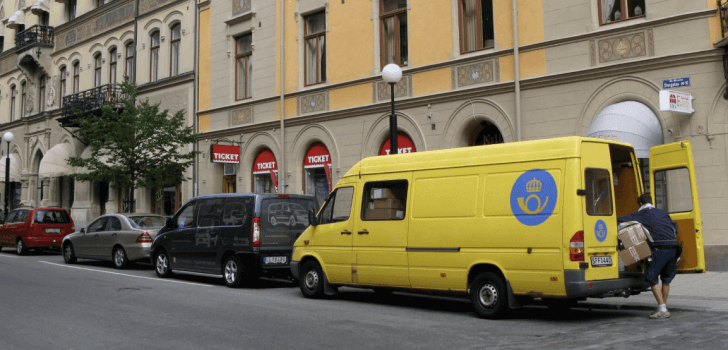Johan Erlandsson has created a six-wheeled cargo bike called the Velove Armadillo, which travels down the cobbled pedestrian walkways of Gothenburg, Sweden. When describing his bike, Erlandsson calls it “the rolling deckchair.” The bike is 14 feet long and 34 inches wide and has a pedal-assisted electric drive.
The reason Erlandsson created the bike for making deliveries to local stores and offices. This comes at a time when the city is squelching the use of delivery trucks and other heavy trucks. “You are never stuck in a [line]. It’s quicker to get from A to B – and it’s safer.”
You are likely to see many of these types of delivery systems in the area as cargo distribution is undergoing an overhaul as part of an initiative to create a more attractive environment for cycling and walking. Parking has been prohibited; normal streets have been converted into pedestrian areas; and traffic restrictions mean that normal van and truck deliveries are only allowed between 5:00 a.m. and 10:00 a.m. on the crowded streets.
Christoffer Widegren from Gothenburg’s urban transport administration notes that a decade ago, “It was a messy situation here. It was a quite cramped city center, where the traffic situation clearly affected the atmosphere and the competitiveness of the area in a negative way. The city center could not compete with the shopping malls outside of town in terms of accessibility by car or parking places, so instead it had to present itself as an inviting and attractive environment which offers more than just shopping.”
The city of Gothenburg helped launch Stadsleveransen (the City Delivery) in order to help small businesses that were unable to organize early-morning deliveries. The program combines deliveries for businesses and shops within a central area of about 10 streets.
Private delivery companies leave their packages at a delivery consolidation terminal. Then, Stadsleveransen’s fleet, consisting of two cargo bikes and two electric cars, carry the goods the final few miles.
When the pilot delivery program launched in 2012, it served just eight clients. Now, almost 500 small and large businesses use the service and almost 400 packages are delivered daily.
While Stadsleveransen only accounts for the movement of 20% of the volume of goods in the area, it handles the majority of deliveries. The service is funded by fees paid by private transport companies and advertising sales. And, the service is only growing.
According to a recent report, it is estimated that about 51% of goods transported in cities could be delivered by cargo bikes and regular bicycles – thereby significantly reducing congestion and emissions.
